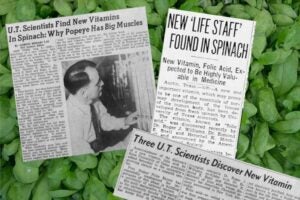AUSTIN, Texas—Dr. Kerry Kinney, assistant professor in The University of Texas at Austin College of Engineering, has won a four-year National Science Foundation Early Career Development Award to study whether fungus can be used to clean contaminated air by consuming pollutants. The CAREER Award is among the highest research honors a young faculty member can receive.
The 33-year-old civil engineering professor will use the Award to determine whether yeast can be used to break down volatile organic compounds and nitrogen oxides that are among the chief components of air pollution. Kinney has taught at UT Austin since 1996.
Volatile organic compounds (VOCs) include many potentially carcinogenic vapors, such as toluene and benzene. VOCs are released from gasoline, paints and a wide variety of solvents. Nitrogen oxides are generated by automobiles, power plants, boilers and other internal combustion engines.
When VOCs and nitrogen oxides combine with sunlight in a series of complex chemical reactions, ozone is formed. Ozone is an important component of smog.
Kinney already has performed experiments indicating that fungi actually eat VOCs, turning them into harmless byproducts. She plans to study the pollution clean-up potential of both one-celled yeast and strand-like, filamentous fungi, determining how they remove nitrogen oxides and break down the organic compounds. She also will investigate how fungal growth affects the performance of vapor phase bioreactors, devices that clean the air by removing gaseous contaminants.
A bioreactor generally consists of a tall column packed with ceramic beads or other type of packing material that provides a medium on which bacteria grow. Bioreactors can range in size from a column a few feet high in the lab to multi-story facilities used in industrial plants. Most bioreactor systems rely on bacteria that occur naturally in the environment. Air containing volatile organic compounds is pumped into the bioreactor as a food source. At present, these devices are used to control odor at wastewater treatment plants and at industrial facilities to treat certain waste gas streams.
Kinney’s bioreactor relies on fungus instead of bacteria to break down pollutants. Kinney’s bioreactor project is the first to try fungi on nitrogen oxides and among the first to use fungi on volatile organic compounds. Her preliminary research indicates that fungi consume VOCs more efficiently than bacteria, an important development because bioreactors that operate more efficiently could be used more widely in cleaning the air.
Kinney said her bioreactor device has the potential to treat stationary pollution sources, such as paint spray booths, boilers and waste gas streams generated at industrial facilities.
Kinney explained that a “fortuitous accident” led to the discovery that fungi can consume toluene, rendering it harmless.
“We hadn’t filtered some of the air that went into our bacterial bioreactor, and some fungal spores got in and took over,” she said. At first, researchers were going to kill the fungi, but one of the graduate students noticed the fungi was removing toluene. They decided to let the process continue.
The initial results were exciting. Preliminary research indicates that fungal bioreactors may be able to remove over ten times more volatile organic compounds than bacterial systems and they may be more efficient than bacteria at removing nitrogen oxides. Furthermore, fungal bioreactors can tolerate much greater extremes in operating conditions and appear to be more resilient than bacterial systems.
“One problem with using bacteria in a bioreactor is that the constant flow of contaminated air tends to dry out the environment in which the bacteria are growing. Fungal species, however, actually like the drier conditions,” Kinney said.
Contaminants from industrial processes are the food source for bacteria in the bioreactors. When a factory shuts down on weekends or holidays, the bacterial food supply is cut off as well. Kinney said fungi appear to be better able to tolerate a periodic “starvation” diet, and are able to bounce back quicker than bacteria.
“Bacteria take up to eight hours to wind up again, while fungi are ready to go again in as little as an hour,” Kinney explained. She said fungi also seem to be able to handle much higher concentrations of toxic contaminants than bacteria.
CAREER awards are designed to aid young faculty members in developing expertise at teaching as well so Kinney plans to develop a mentoring program at UT Austin to link female undergraduate engineering students with graduate mentors. Kinney has a bachelor’s degree in chemical engineering and master’s and Ph.D. degrees in civil and environmental engineering, all from the University of California at Davis.
For additional information, contact Dr. Kerry Kinney at the UT Austin College of Engineering (512) 232-2579 or the Office of Public Affairs (512) 471-3151. High-resolution photo of Dr. Kinney available at: http://www.engr.utexas.edu/comm/Kinneyhighres.html



